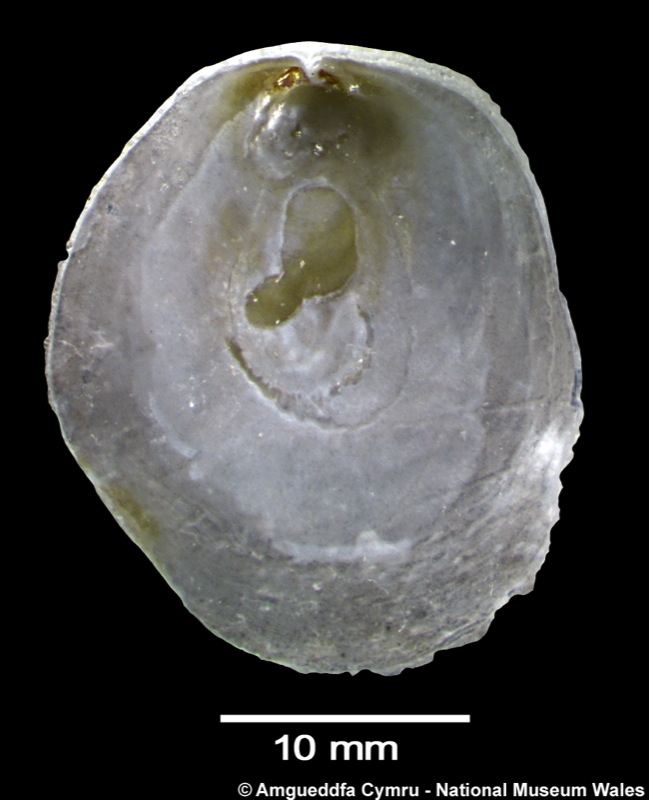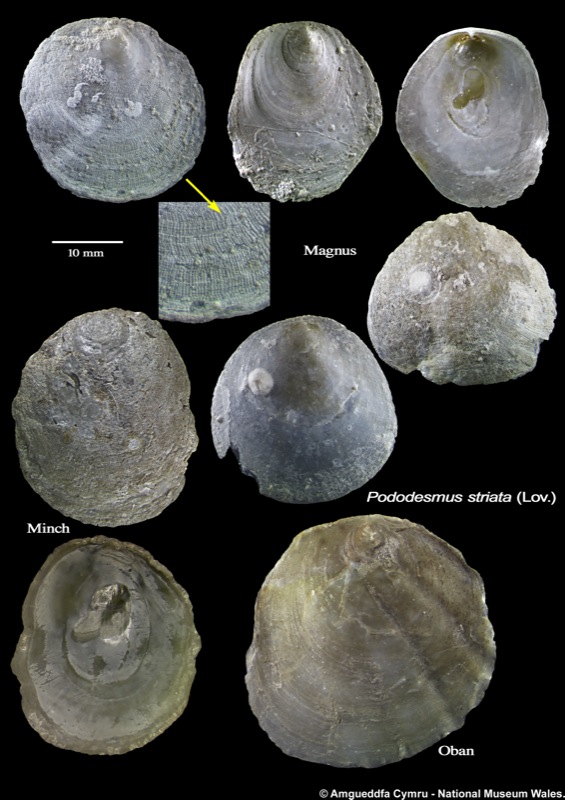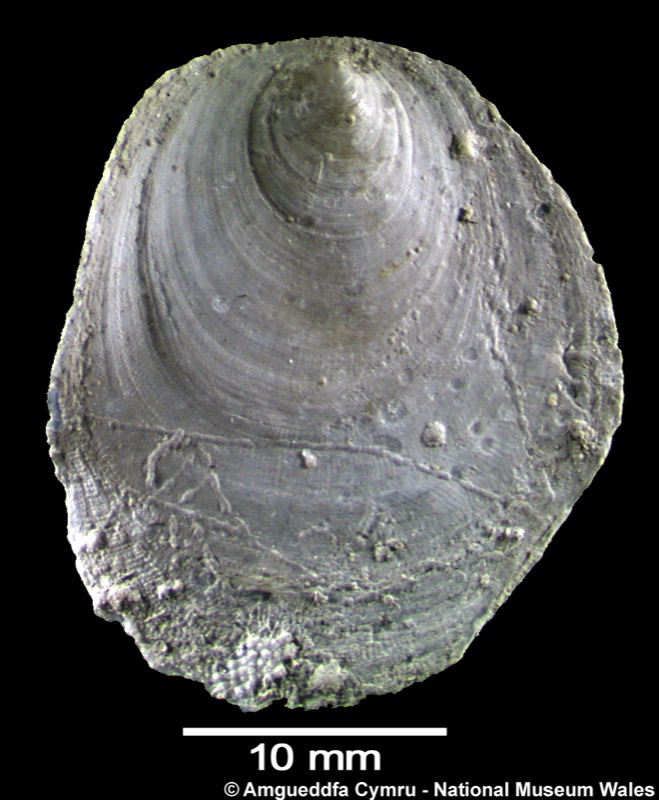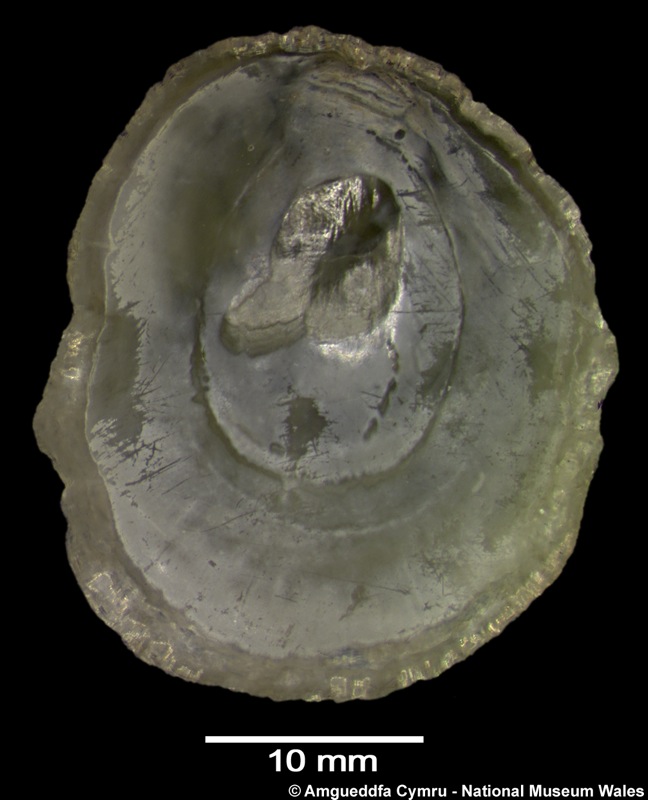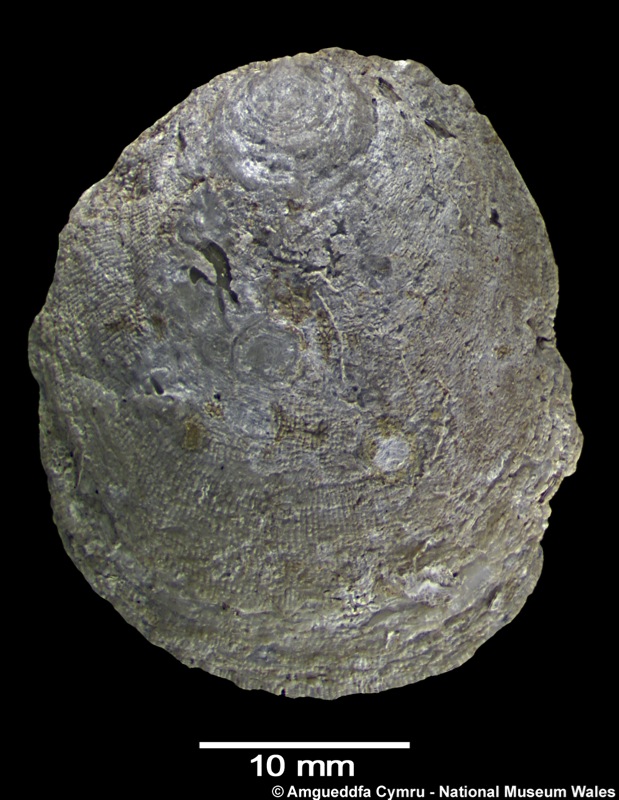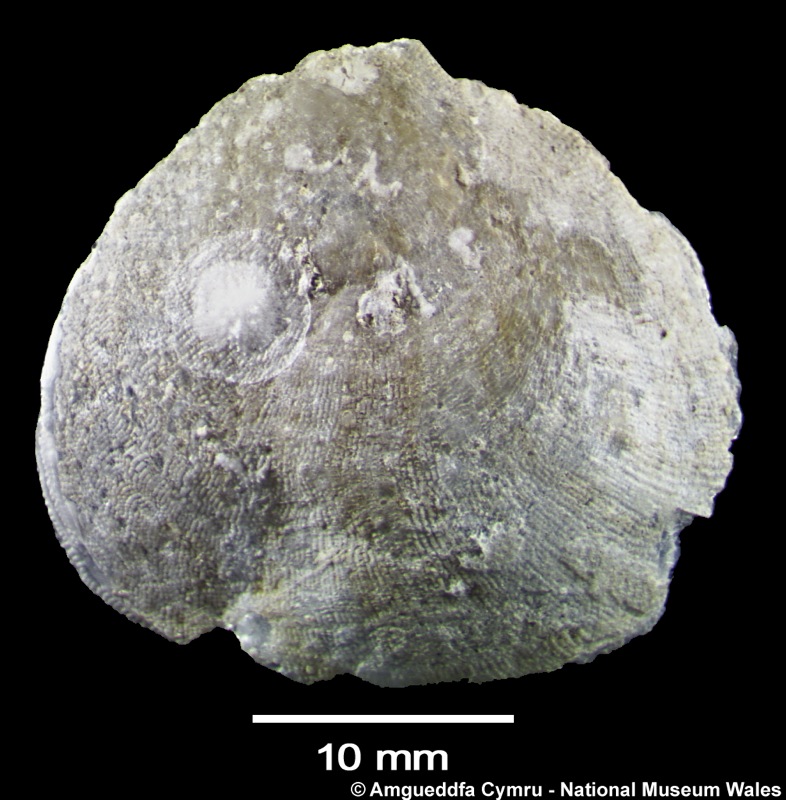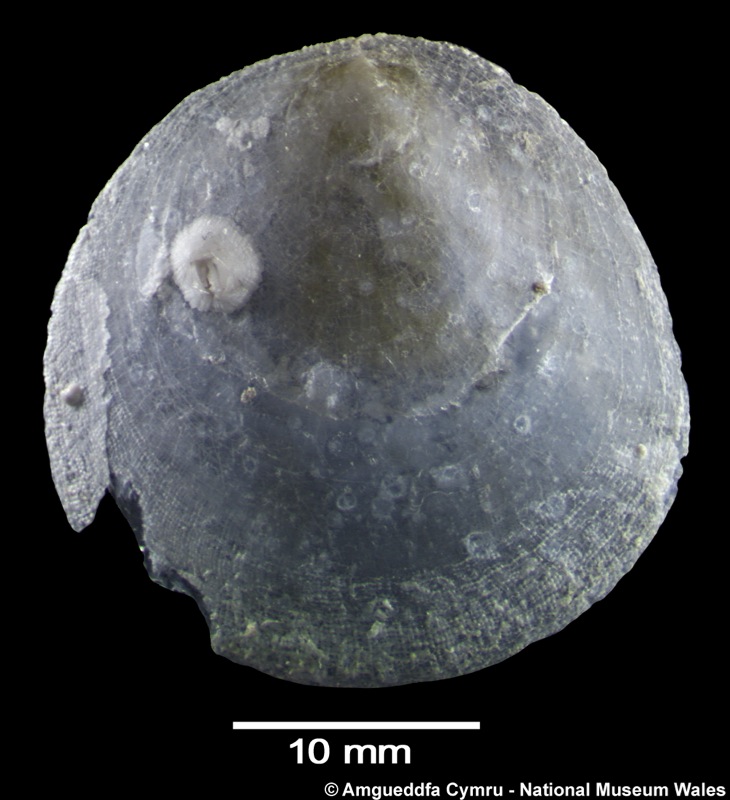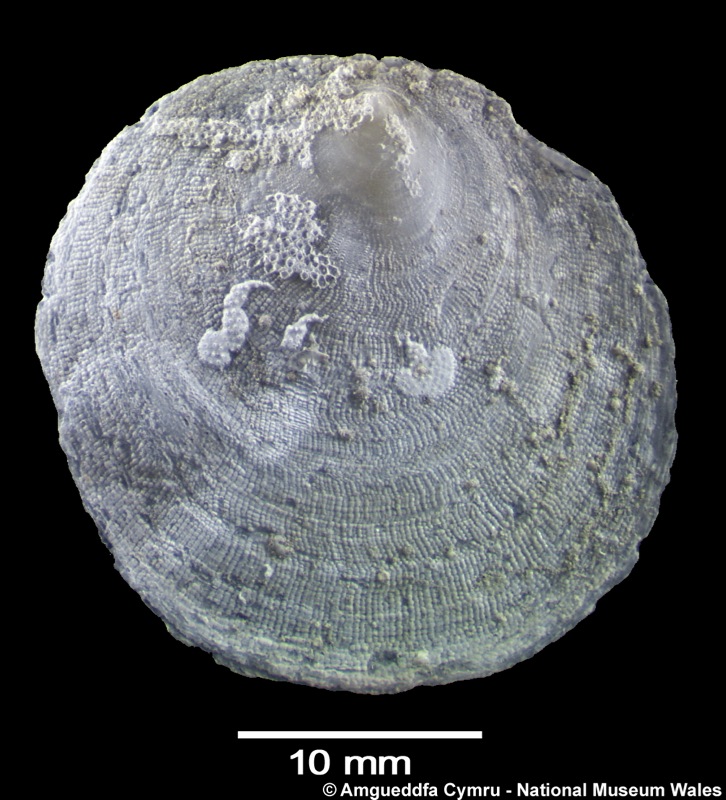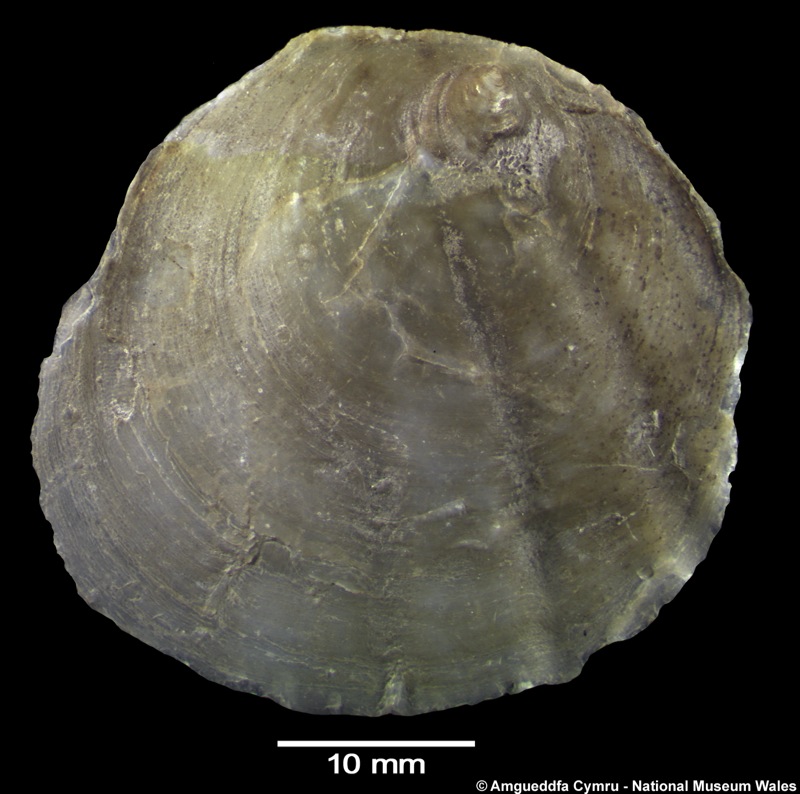Pododesmus squama (Gmelin 1791)
Anomioidea : Anomiidae |
| Tebble name: | Monia squama (Gmelin) |
| Smith & Heppell name: | n/a |
To size: To 25mm. Shell Structure: Upper valve thin to fragile, opaque to hyaline; lower valve very thin, hyaline. Equivalve: Inequivalve, upper (left) valve convex; lower (right valve) flat. Equilateral: Inequilateral, beaks close to the middle of the dorsal margin. Tumidity: Profile flat. Outline: Upper valve subcircular but irregular conforming to attachment surface; lower valve as upper but with a large oval byssus aperture.
Sculpture: Upper valve with densely packed radial riblets (c.200), these minutely imbricated, in very thin shells this sculpture is obscure with faint impressions of the radially arranged scales; lower valve with growth lines only. Margin: Irregular but smooth. Ligament: In a half moon shaped pit beneath the beaks. Hinge: Obscure, some with traces of a median crural ridge directly above the ligament, in very thin shells the crural tooth may be prominent. Pallial Musculature: Upper valve with two scars the dorsal (byssus retractor) much larger and joined with the smaller single adductor scar. Scars with or without faint radiating furrows. Lower valve with a single faint adductor scar. Periostracum: Obscure. Colour: Upper valve colourless to tan to brown, thin shells often with brown radial rays on a pale background; often obscured by attached epifauna, internally the central area may be tinged green to yellow green. Lower valve white, semitransparent. Additional Characters: Anatomy: Ctendium with reflected filaments.
Distribution & Ecology
Depth Range
Continental Shelf (to 200m)
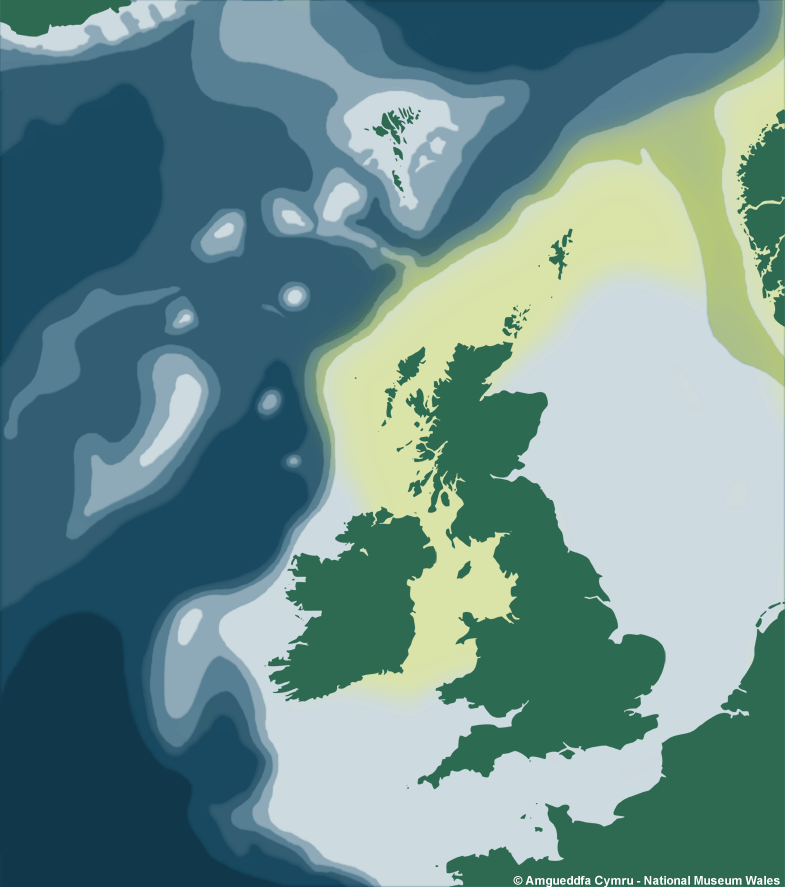
Additional Information & Related Species
Additional Comments
Related Species
Anomioidea : Anomiidae
References
Listed are literature citing Pododesmus squama (Gmelin 1791). Reference containing the species Type Description is highlighted.
|
Gmelin J F 1791. Carli Linnaei systema Naturae per regna tria naturae. Editio decimatertia, aucta, reformata, Vermes Testacea 1 (6). Lipsiae. 3021-3910. |
|
Winckworth, R I922. Note on the British species of Anomia. Proceedings of the Malacological Society of London. 15: 32-34. |
Resources
- Conchological Society
of Great Britain & Ireland
Provides resources for understanding, identifying, recording, and conserving molluscs - CLEMAM
Check List of European Marine Mollusca - MarLIN
The Marine Life Information Network for Britain and Ireland (MarLIN) provides information for marine environmental management, protection and education. It is a centre of excellence in spatially based and time-series marine biological information and supports good stewardship in the marine environment. - NBN Gateway
National Biodiversity Network's Gateway. Use it to explore UK biodiversity data, as contributed by participating data providers. - BivAToL
- MarBEF
- Malacological Society
- Unitas Malacologica
- Census of Marine Life
- MarBEF
MarBEF, a network of excellence funded by the European Union and consisting of 94 European marine institutes, is a platform to integrate and disseminate knowledge and expertise on marine biodiversity, with links to researchers, industry, stakeholders and the general public.


